The sensitive contrasts of Rauður
The Icelandic music scene is often associated with bold, creative, dark, melancholy. And is loved by people who are unlucky not to have been born in that majestic country. Seen in this light, Rauður fits perfectly into the described musical landscape and we will also discover its beauty. A conversation with the only member of Rauður : Auður Viðarsdóttir.

Auður looks calm and can shape her thoughts well in a very open conversation, about feeling, art, music and composing. “I always start with the music, usually on the piano, at home, with the kids still around me.” This intimate homely atmosphere has recently become a digital addition. “It is really different. I make a piano piece all by myself from start to finish. On the computer I can build sounds and share them with others. But some of the songs are so close to me that I don’t share them… you see?”
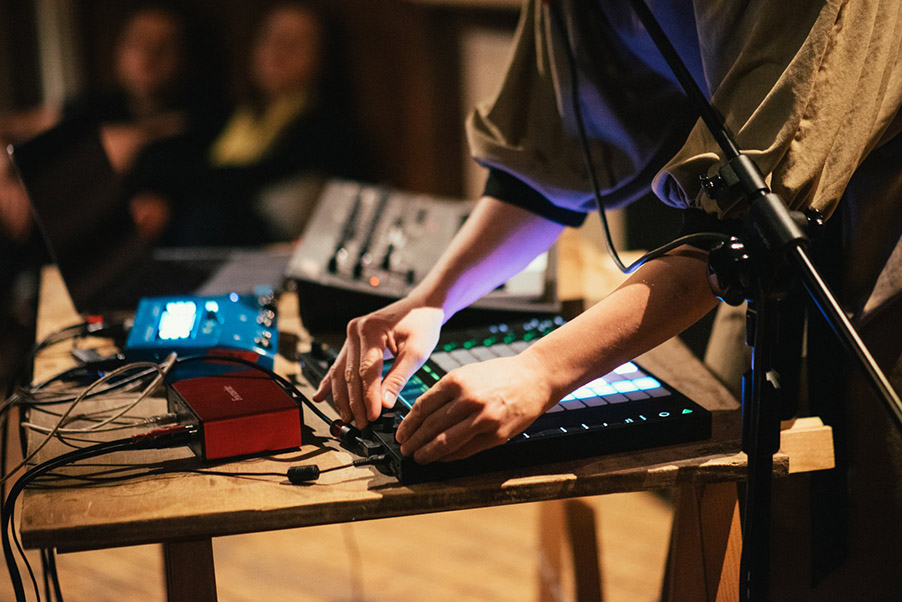
The songs on the album debut ‘Semilunar’ – which was released in 2019 – have indeed become very personal (art) works, in which the atmosphere of the sounds cleverly combines with her lyrics. The album sounds daring and full of unexpected contrasts, hard, soft, light, dark, sweet, dramatic. Similarly in the language, partly English, partly Icelandic. “In my previous band Nóra I wrote in Icelandic. At the time I thought it was strange to write in English, a language in which I don’t think.” Her time as an interim in Malmö, Sweden, caused a slight change. “I spoke English with my musical friends, which made it easier to write in English.” However, the language continued to have a major influence: “In English I repeated sentences that I have heard before. I went less deep in myself and in my feelings, like in Icelandic. But Icelandic sounds very soft, but can also be very loud. In my music the vocals should be more fluid, like in the English language. It is more difficult to fit Icelandic lyrics into my music just right.”
The album is completely Auður, released under the name Rauður, red. It seems that “Semilunar” had to be released, and they had to do it all alone. “Yes, I wanted to make that album for a long time. It just had to get out of my system. And as a learning process to force me to go that far. And it worked. My brother only did the final mix.” She calls her style dreamy electronic pop music. “Yes, or an electronic singer-songwriter. I like that too.”
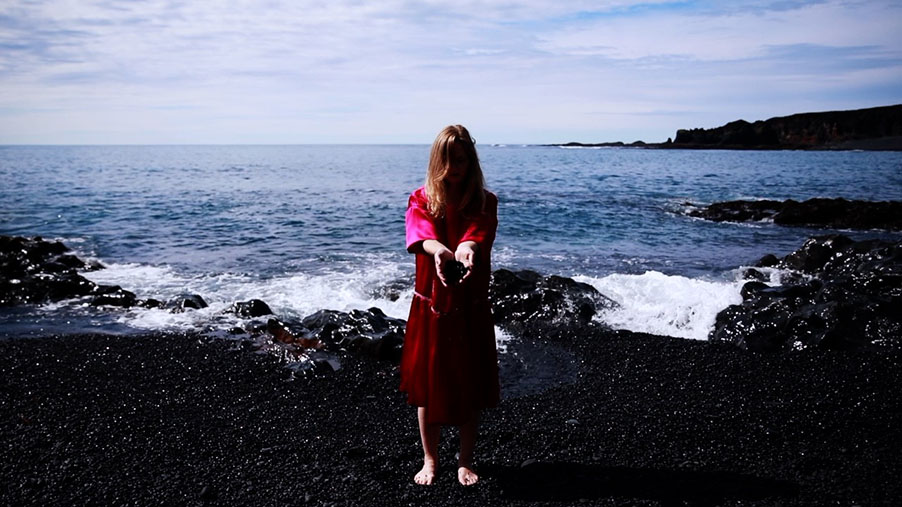
“I want to set something in motion for you, something you cannot explain, but it does happen.” With all the turbulence and contrasts that come with it, as on the album. “Yes, it was created in a turbulent time. I tried to find peace in things that have happened in the past. But also wanted to discover new things. That is why there are so many contradictions.” The songwriting process is partly healing for her. “But perhaps it is also for the listeners. Although a high goal, but still. In any case, it has brought me peace, a blank page, on which I can make something new. ”
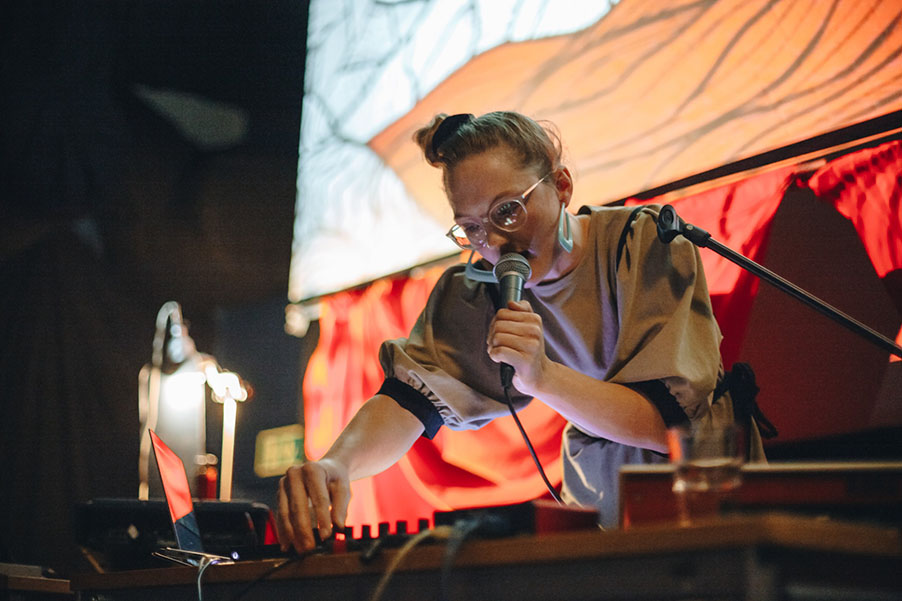
Auður gets to know herself as a sensitive artist who works from images. “I sometimes paint and then make the lyrics. Sometimes it is a story, sometimes a description, a feeling, with colours. Perhaps best described as a dream about a feeling, which you cannot immediately describe ” Although visually oriented, Auður has great admiration for authors. “I would also like to write a book myself, but I have not yet written anything that is longer than a lyric. But actually, I like all art forms. But”, laughing, “most of all a big concert. I also play all my songs live, alone. I feel at home there. It gives me so much energy. People who listen to me.” Fortunately, in the endless Icelandic summer evenings, small concerts may be given again. “Lovely, in the summer outdoors.”
Auður likes to use metaphors and personal, deeper meanings. It starts with the title, “Semilunar”. “If my daughter used to be sad, she sometimes said that the moon was broken in her heart. At a later age, however, she turned out to have a real heart problem, luckily not very serious, but something with the Semilunar, the crescent moon valve in the heart. In addition to its poetic meaning, the name now also has a medical one: the moon in her heart was really broken…” She takes a deep breath and continues: “And semilunar can also be considered as half lunatic. Something I almost got into making it, in moods, in fatigue. You also hear it in the music. But now I’m okay!”
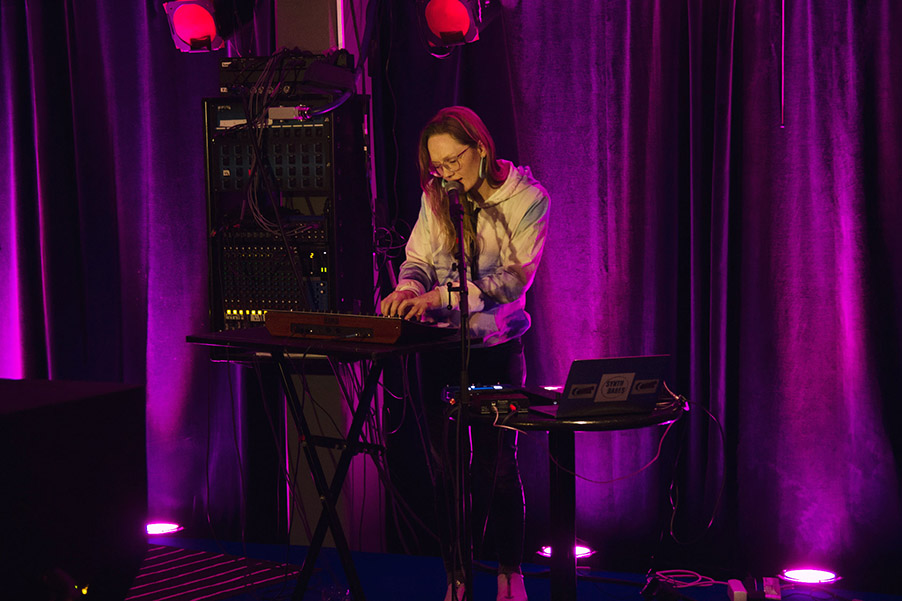
For her next album, Auður, or Rauður … also wants to invite other musicians. Just like in the collective called Synth babes, with Australian Anya Trybala and Swedish Lotta Fahlén. “They started in 2015 and I have worked together with them since 2018. It is a network aiming for greater equality and diversity in the electronic music scene. We make electronic music, organize festivals and help each other with albums.” She emphasizes the importance of addressing these gender issues. “For the music industry and the world in itself. But also for my own personal and musical development.” Her influences come from the feminine angle: Grimes, Kate Bush, Beth Gibbons (Portishead), FKA Twigs, Fever Ray. “They each do their own thing, in their own way.”
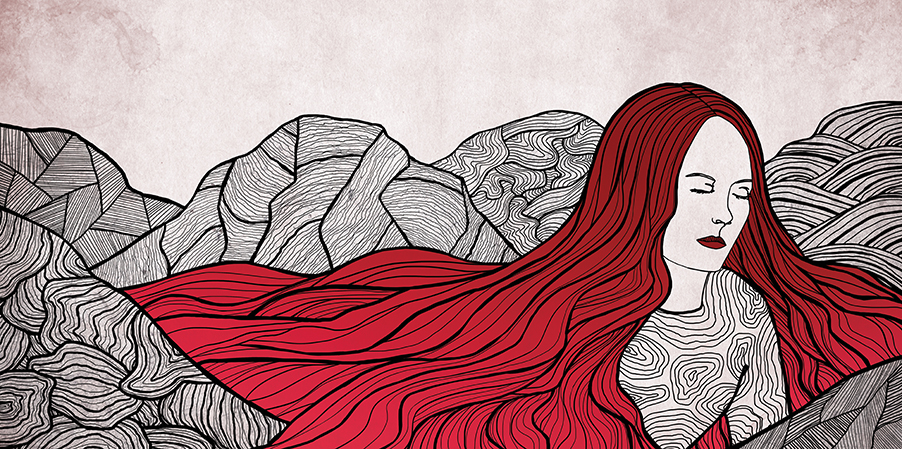
In addition to working together, she also wants to go more acoustic in the next album. “I love strings, especially cello. And I want to make my voice more prominent, more singer-songwriter. So the next album will be stripped down a bit more: voice, piano, cello; with maybe a synth… in the background. But however the album will sound, it will certainly be a journey of discovery again, especially to herself: pure and personal. The sensitive contrasts of Rauður… or Auður…





